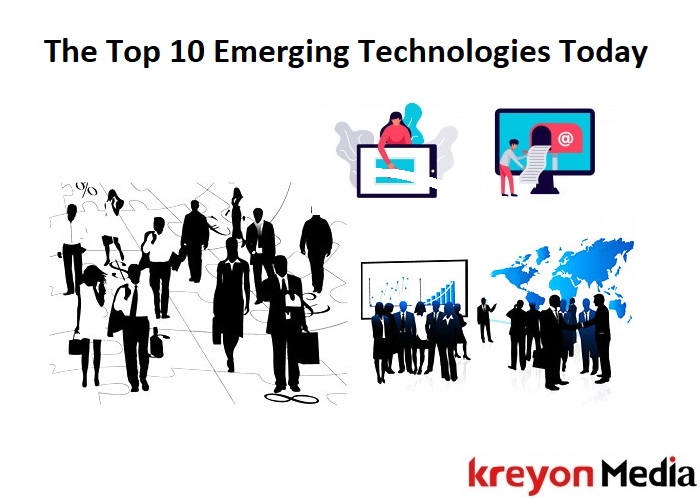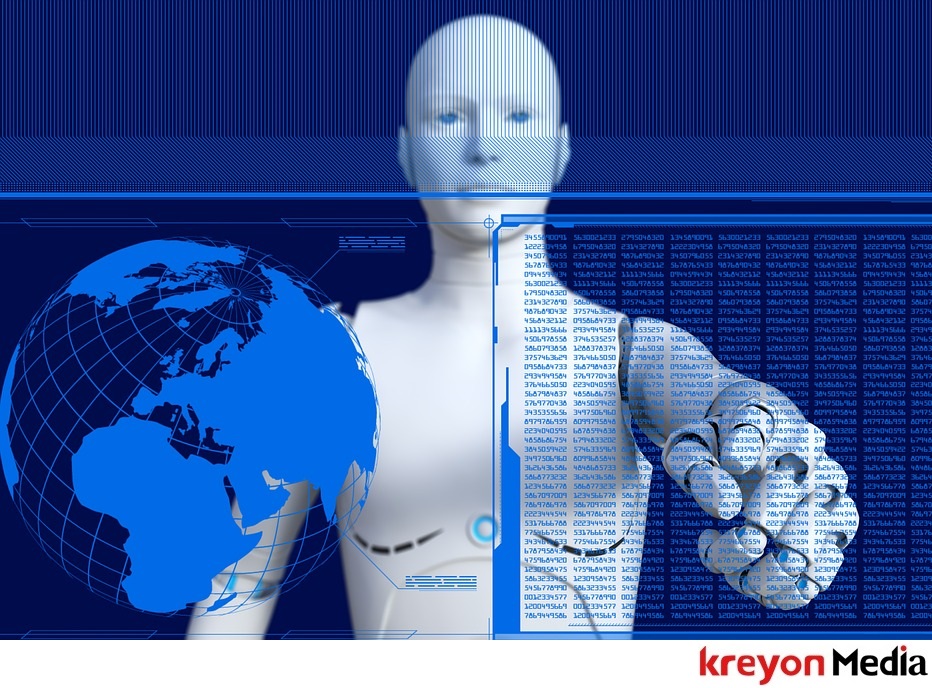
Technology is at the forefront & catalysing the changes in the world. The physical world is getting transformed into a digital one. The technological innovations are creating a new world and solving challenges at a massive scale. Here we look at the top 10 emerging technologies based on a report from WEF & Scientific American magazine. This report analyses emerging technologies that have the impact to transform the society, governance and industries around us.
2020 has been a year dominated by healthcare agenda. The study looks at options and viabilities of using technological advancements for fast tracking vaccination. The report looks at technology as an agent of change, the opportunities they bring and the potential risks posed by them. For e.g. how can digital replicas help in making clinical trials safer and faster for patients? Is it possible to replace human volunteers with digital replicas for clinical trials? Here’s a look at some of these innovations and technologies that can impact the world around us:
1. Microneedles for Painless Injections & Clinical Tests
Microneedle devices are painless ways of injecting patients and drawing blood samples. The micro sized needles typically moving towards commercialization for rapid and painless blood sampling for diagnostics, clinical trials and healthcare monitoring.
The US & Europe have approved a blood collection device, which can be used by lay people to collect blood samples without any medical personnel. People can take their own blood samples and send them to labs for clinical trials.
Research is also progressing on integration of microneedles and wireless communication devices. Microneedles are integrated with wireless devices to measure a biological molecule from blood samples, prescribe a drug dose and then deliver that dose to the patients. This could help in advancing personalised healthcare services.
Ofcourse, this field requires extensive results, accuracy and methodology to find its way into our day to day lives. Theranos, a company founded by Elizabeth Holmes, had a peak valuation of $10 billion. The company made many claims around blood testing technology, which proved to be false. The company had to shut down in 2018 and Elizabeth is indicted for conspiracy & fraud.
2. Sun Powered Chemistry
Many chemicals are made by using fossil fuels. However, a novel approach of using sunlight to convert waste carbon dioxide into useful chemicals. This could reduce the emissions considerably. Climate change is an important issue that needs to be addressed by industries and governments around the world. Use of sunlight activated catalysts, or photocatalysts is reducing the need for using fossil fuels & using unwanted Carbon dioxide gas as a raw material for producing chemicals.
This essentially helps in creating solar refineries for producing chemical compounds that can serve as raw materials for several industries. These molecules and compounds are helpful in creating products like medicines, detergents, textiles and fertilizers.
3. Virtual Patients

People have been waiting for the Covid-19 vaccine for quite sometime now. They want the clinical trials to be faster and safer, so that they can have the access to the vaccine when they want it.
Virtual patients are replacing humans for clinical trials. The simulations are helping with faster and safer trials. The algorithms are able to diagnose diseases with greater accuracy. The images from patients are being used for detecting diseases. There is a growing case of doctors being assisted, if not replaced by technology very soon.
Even for under trial patients, technology can be quite useful. It could save lives, speed up trials and fast track preventive vaccination. The virtual organs simulate human organs by feeding anatomical data drawn from high resolution data of the actual organ into a mathematical model that governs the organ. It is complex with several algorithms running into the equations, data & mathematical modeling that represent the functioning of human organs. Computer based diagnostics are gaining new momentum and will see more developments in the near future as regulators approve its commercial usage.
4. Spatial Computing
Spatial computing is the convergence of physical and digital worlds. It represents emerging technologies that integrate physical objects digitally using smart sensors and devices. Factories can use spatial computing to build automated manufacturing capabilities using robotics, industrial engineering and the internet of things.
The spatial mapping could add new capabilities that power our day to day lives. For e.g. Alexa devices controlling the home appliances, LEDs etc. This technology will help people and machines interact in a smart way. It’s finding great applications in healthcare, transportation, manufacturing and homes already.
5. Digital Medicine
The case for digital medicine has got stronger in 2020. Digital medicine is a combination of use of apps and software for treating patient’s physical disorders. For e.g. mobile apps are able to diagnose and prescribe preliminary treatment for patients usings symptoms like users’ voices, locations, blood, sugar levels and texting activities etc.
Today smartwatches are able use sensors to detect & alert people for conditions like atrial fibrillation, an anomalous heart condition. The digital medicine technology received a great booster with Covid-19, a case where millions of people received recommendations on their mobile devices.
6. Electric Aviation

Air travel had a share of 2.5% in global carbon emissions in 2019. A number projected to triple by 2050. Electric aviation could be a very effective approach to counter this problem. Several companies like Airbus, Ampaire, MagniX etc are working on electrical flights.
While some airlines have started offsetting their contributions to atmospheric carbon, significant cutbacks are still needed.
The electric airplanes could cut down carbon emissions. The electric propulsion would also cut down fuel costs by up to 90% & maintenance costs by nearly 50%. The electric airplaces will also eliminate noise by approximately 70%.
A strong reason for airlines to invest in this technology lies in potential savings in operational costs. The environmental benefits will also be quite notable.
7. Lower Carbon cement
The global construction industry requires cement for building our world. Yet, it produces 8% of the total carbon dioxide produced by humans in the world. Cement production is one of the largest producers of carbon dioxide. As per Chatham House report, 4 billion tonnes of cement are produced every year. The figure is expected to rise to 5 billion tonnes over the next 30 years.
An approach developed by Rutgers university is being used by a New Jersey based construction firm. This reduces carbon dioxide footprint by 30%. It uses more clay, less limestone, and less heat for making cement. There are other techniques which use bacteria and other chemical components like steel slag to reduce carbon footprint during construction. While it may not be possible to do away with traditional concrete in construction, alternate approaches are being used for building pavers, facades & temporary structures.
8. Quantum Sensing
![]()
Quantum sensing could be a disruptive technology. It could power self driving cars and autonomous vehicles. The quantum sensors could be used in vehicles to see around corners, it can also help with underwater navigation, detect volcanic activity, earthquakes and monitor a person’s brain activities.
Quantum sensing technology can be used in many fields including medical and defence applications. Governments and private investors are throwing their weight behind quantum sensors to build industry ready applications for mass scale. Case in point being the UK governments £315 million fund for Quantum Computing Programme.
9. Green Hydrogen
Green Hydrogen is produced through electrolysis. It produces hydrogen and oxygen with no other by products. The energy companies around the world are looking at ways to build renewable sources of power.
A consortium of companies has been working on a project called Gigastack. It will be used to produce green hydrogen and an industrial scale. The Energy Transitions Commission, says green hydrogen is among the four emerging technologies necessary for meeting the Paris Agreement goal, which requires decreasing more than 10 gigatonnes of Carbon dioxide every year from mining, construction and chemical industries.
10. Whole Genome Synthesis

Whole genome sequence is an exciting development. When Coronavirus was spreading, Chinese scientists uploaded the genetic sequence of Coronavirus to genetic databases. Swiss scientists were able to synthesize the entire genome sequence and even produced the Coronavirus from it. It means the virus was teleported without the physical movement.
This is just one of ways how the whole-genome is advancing medicine & other fields. Researchers use software to construct genetic sequences. These are introduced into microbes to do the desired work. For e.g. making a medicine. The software algorithms are being devised to write larger genomes.
The future will see the synthesis of assembling large DNA sequences, which can help in curing genetic diseases. The next decade will be exciting to see where genome sequencing will take us.







